LIVE FROM IPY EVENT COMMING SOON!! WE WANT TO TALK TO YOU! Today was another logging day out on the drilling platform. Because of the continued difficulty extracting sediment, it is very important that we have measurements from the down-hole logging team. Since we have reached a sediment depth of approximately 200 meters, the German logging team was scheduled to drop their probes down the borehole today.
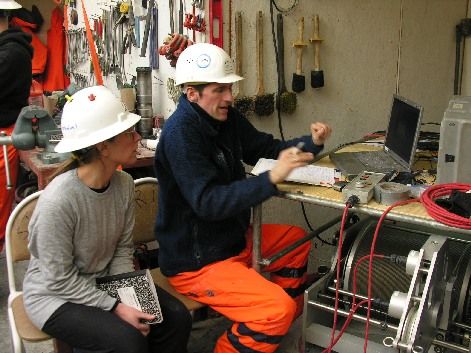 Lead American scientist Julie Brigham-Grette discusses the down hole logging with Jochem Kuck
Lead American scientist Julie Brigham-Grette discusses the down hole logging with Jochem Kuck
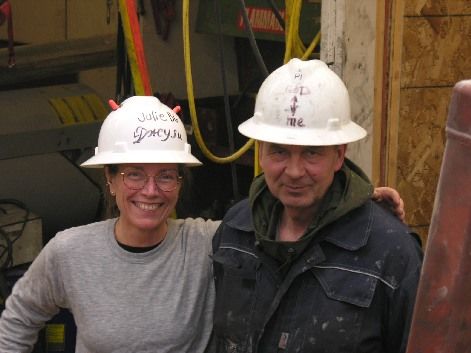 Julie Brigham-Grette and Pavel Minyuk pause for a picture on the drill rig.
Julie Brigham-Grette and Pavel Minyuk pause for a picture on the drill rig.
I mentioned in the journal yesterday, that if something breaks, it is important to have enough equipment and tools and the right people to fix the problem. I saw that process in action today. The other day, one of the plastic tubes for the sediment collection was stuck in one of the drilling tools. While the down hole logging team was working, the drillers were not too busy, so some of the drillers made a tool to try and remove the stuck plastic tube from the tool.
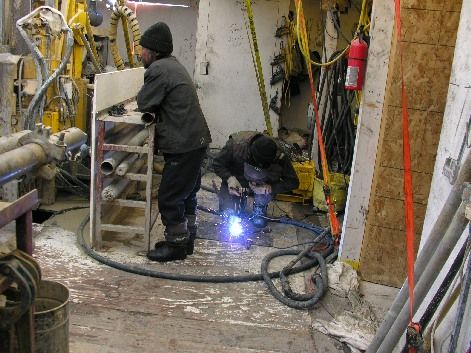 Vasilli welding to make a tool to remove a plastic core liner from the drilling tool.
Vasilli welding to make a tool to remove a plastic core liner from the drilling tool.
I only spent a little time on the rig today... logging is a slow process. There is not much to help with or watch... so I returned to camp to prepare for the Live Webcast (Thursday in the USA). While I was working, Addie Holland and Kristina Brady came into the office and asked if I wanted to go for a hike... a good excuse for me to put down my work...
We checked out (any time anyone leaves camp they must check in with the camp manager and pick up a radio for safety) and headed up to the mountains behind camp. This is a unique landscape... with no trees, buildings or anything for scale; it is hard to judge distances. We walked across the frozen landscape over a mile before reaching the base of the hills. After we started to climb the hills, we came across areas where the wind had blown all the snow away and we were walking on the rocky ground. In one bare patch, I found this antler from a reindeer.
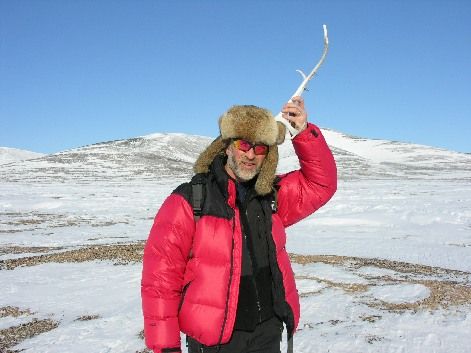 One of the three antlers we found on our hike.
One of the three antlers we found on our hike.
We paused to examine some of the small tundra plants that have adapted to this harsh climate and enjoyed spectacular views of the crater and lake.
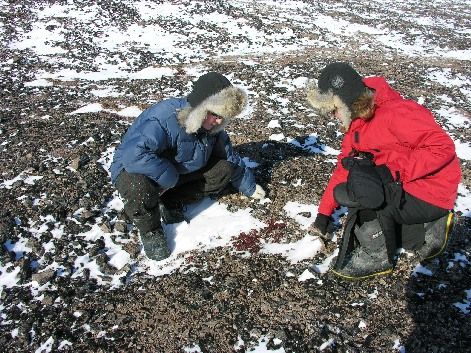 Kristina Brady and Addie Holland stop to examine tundra plants.
Kristina Brady and Addie Holland stop to examine tundra plants.
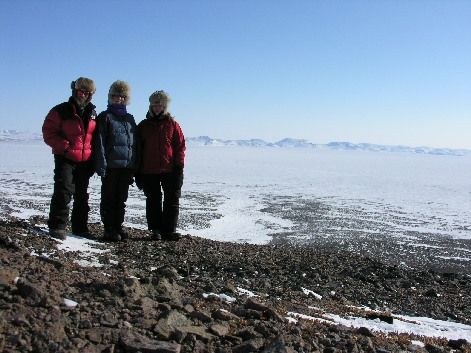 Kristina, Addie and Tim looking across El’gygytgyn crater.
Kristina, Addie and Tim looking across El’gygytgyn crater.
The higher we climbed the colder the temperature and the stronger the wind. For the first time, my good camera froze...in the ON position. I could not take pictures or turn it off. I was able to warm it up and get it working again by holding it against my chest under my coat!
On the way back down to camp, Addie bent down to look at a rock... a shiny black one! I instantly recognized it as Lake El'gygytgyn impact glass. When the meteorite that formed the lake hit the earth, the intense heat and pressure melted some of the surrounding rock into glass. The black rocks in the center of this image are a few of the pieces of impact glass that I found. My students know that I have an interest in meteorites... well so far no one has discovered any of the Lake E meteorite... but it was very cool to see the impact melt rocks as I was standing on the edge of this massive impact crater.
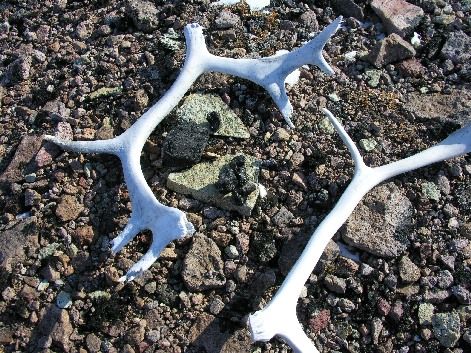 Reindeer antlers with impact glass. (Black rocks in the center)
Reindeer antlers with impact glass. (Black rocks in the center)
As we returned to camp across the large alluvial fan, we frequently paused to enjoy the snow sculptures and drifts. I am continually amazed at the similarities between the arctic and the American desert. I am falling in love with the Arctic just like I love the South-West.
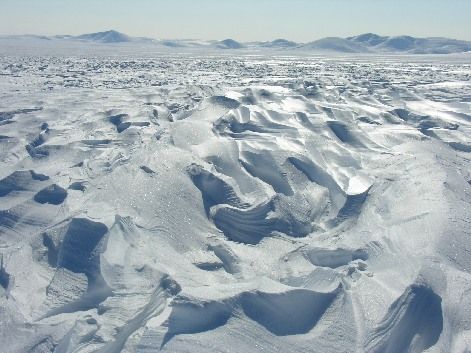 Snowscape to the west of camp.
Snowscape to the west of camp.
